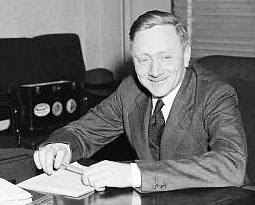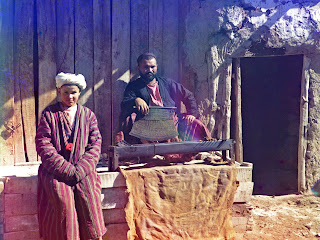History of War
On June 22, 1941, the German Army poured  across the borders of the Soviet Union, initiating nearly 4 years of the most savage and brutal warfare humanity ever experienced. Three Army Groups penetrated Russia on a front extending from the Baltic coast to the Black Sea. One and a half million soldiers of the Wehrmacht obeyed the Fuehrer's directive to destroy the Red Army and the Soviet Union.
across the borders of the Soviet Union, initiating nearly 4 years of the most savage and brutal warfare humanity ever experienced. Three Army Groups penetrated Russia on a front extending from the Baltic coast to the Black Sea. One and a half million soldiers of the Wehrmacht obeyed the Fuehrer's directive to destroy the Red Army and the Soviet Union."The World will hold it's breath!", Adolf Hitler told his Generals. And as the world watched in amazement, the Wehrmacht rolled triumphantly across the Russian steppe, seemingly invincible. Caught by surprise, the bulk of the Russian Air Forces were destroyed on the ground. Under orders not to provoke the Germans, the Russian frontier armies were not given coherent directions to mount a defense of their borders. The Red Army fell back in disorder, surrendered in wholesale numbers, or died in a futile effort to halt the German advance.
Western military experts gave the Russians 6 weeks, perhaps 8 at the most, before suffering total military disaster at the hands of the Germans. Battered by one defeat after another, the poor performance of the Red Army gave no one reason to believe otherwise. With their officer corps decimated by Stalin's purges, the badly equipped , poorly trained and demoralized Red Army sustained losses and gave ground which would have defeated any other country in a matter of days.
For the invasion, Hitler chose the same armies and commanders which had swept through the Low Countries and France in a little over a month. Army Group North, commanded by Generalfeldmarshall Wilhelm Ritter von Leeb, launched their attack from East Prussia, driving for the Baltic port of Leningrad. Army Group Center, under Gfm. Fedor von Bock, erupted out of Poland, with Moscow as it's objective. Under the command of one of Germany's "Black Knights", Field Marshal Gerd von Rundstedt, Army Group South headed for the Ukraine, and the oil fields of the Caucasus.
Facing them in the field were their Soviet counterparts, Soviet Marshals Klimenti Voroshilov, an old Bolshevik, drinking partner, and crony of Stalin; Semyon Buddeny, a cavalry officer of indifferent ability in modern warfare, and Semyon Timoshenko, one of the few capable high ranking officers to survive Stalin's purges.
Anticipating the easy capture of Moscow, Leningrad, and the Caucasus, the planners of Oberkommando der Wehrmacht (High Command of the Armed Forces, or OKW) gave themselves less than 6 months to effectively destroy the Red Army, occupy European Russia, and halt Operation Barbarossa at the foothills of the Ural Mountains. In Hitler's view, this would secure for Germany all the living space, food, and mineral resources it would ever need, and would in effect constitute victory for the Reich in the Second World War.
 German surprise and success was so overwhelming in the first few weeks that few would have disagreed with that assessment. On top of the disasters suffered by the Red Army, the Soviet government itself seemed to fall into disarray. Joseph Stalin is reported to have gone nearly catatonic for 11 days, while Soviet Foreign Minister Vyacheslav Molotov effectively ran the government. True or not, this amount of time lapsed before Stalin addressed the Russian people about the nature of the calamity that was upon them.
German surprise and success was so overwhelming in the first few weeks that few would have disagreed with that assessment. On top of the disasters suffered by the Red Army, the Soviet government itself seemed to fall into disarray. Joseph Stalin is reported to have gone nearly catatonic for 11 days, while Soviet Foreign Minister Vyacheslav Molotov effectively ran the government. True or not, this amount of time lapsed before Stalin addressed the Russian people about the nature of the calamity that was upon them.In a halting, somber tone, Stalin spoke to the Russian people in a radio broadcast on July 3, 1941, imploring them not to give up hope. He reminded them of Napoleon, and the defeat of his armies. Hitler was no more invincible than the French Emperor, he declared. Stalin called for a "Scorched Earth" behind the retreat of the Russian armies, non-cooperation, and partisan warfare on the part of the occupied territories. He also expressed gratitude for the promises of support from the Western democracies.Western support was immediately forthcoming from Great Britain. After standing alone against the Nazis for an entire year, Winston Churchill stated that, "All who resist Nazi domination shall have our aid". Derided by opposition members of Parliament about his long-standing position against Communism, Churchill retorted, "If Hitler were to invade Hell, I should at least stand in the Commons and say a few words on behalf of the Devil". Rhetoric aside, there was little that Britain could offer of immediate assistance, and Russia faced the German onslaught alone.
One disaster after another plagued the Red Army as the Germans drove deeper into the Russian heartland. By July 16, 1941, Army Group Center had captured over 600,000 prisoners alone. An ill-conceived and executed counter-attack at Kharkov cost the Red Army over 300,000 men. The Wehrmacht had captured the city of Smolensk, and the road to Moscow appeared to be open.
In the north, Field Marshal von Leeb's forces had approached the outskirts of Leningrad. Here the Germans shied away from an all-out street fight to take the city. The Finns, in the meantime, had resumed war with the Soviet Union, and their forces combined with the Germans, surrounded Leningrad for a 900 day long siege. Leningrad held, at the cost of one and a half million civilians dead, from starvation, disease, and exposure. However, the Germans were not without problems of their own. For reasons best understood by Hitler, they diverted vital resources to enhance the push upon Kiev, and the drive towards Moscow faltered. By the time Kiev was in German hands and the prime objective shifted back to Moscow, time and the Russian winter was starting to work against them. Stalin had recognized the vital work of Gen. Georgi Zhukov at Leningrad, and directed him to marshal the resources necessary to save the Soviet capital from being over-run. From Oct. 1941, Field Marshal von Bock had concentrated his armor and infantry to close upon Moscow, spear-headed by the master of the Panzers, Gen. Heinz Guderian.
In the closing days of October, 1941, Stalin held the annual observance of the Bolshevik Revolution in Red Square. The military review was held as usual, but the soldiers continued marching out of the city, directly towards the front. The Red Army fought a delaying operation at the approaches to the city, while Zhukov gathered forces for a counter-attack. On or around Dec. 8, 1941, an advance patrol from Panzer Gruppe Guderian was within eyesight of the spires of the Kremlin. This was probably the closest the Germans ever came to their dream of conquering Soviet Russia. Army Group Center, exhausted and over-extended, had been pushed to the limit.With an impeccable sense of timing, Zhukov struck back.
Fresh reserves of infantry, armor, and cavalry fell upon the German front lines. German troops, still wearing summer uniforms and ill-prepared for the Russian winter, fought back as best they could, but were overwhelmed. Von Bock's soldiers bled and died in the snow, and the front of Army Group Center crumbled. OKW insisted upon an immediate withdrawal, and an end to the Russian adventure. Hitler overruled his Generals, giving a firm order to stand fast and fight to the last man.
The Luftwaffe jury-rigged airlifts of supplies to relieve  isolated pockets. The experience and training of German staff officers improvised strategies to hold off the Soviets while they rallied their shattered armies and held their ground. The inexperience of the Soviets at a war of rapid movement made it impossible for them to press their advantage and finish off their opponent. All these factors combined enabled the Wehrmacht to hold their position in Russia, and to embellish the myth of Hitler as a military genius
isolated pockets. The experience and training of German staff officers improvised strategies to hold off the Soviets while they rallied their shattered armies and held their ground. The inexperience of the Soviets at a war of rapid movement made it impossible for them to press their advantage and finish off their opponent. All these factors combined enabled the Wehrmacht to hold their position in Russia, and to embellish the myth of Hitler as a military genius
History of War 




























